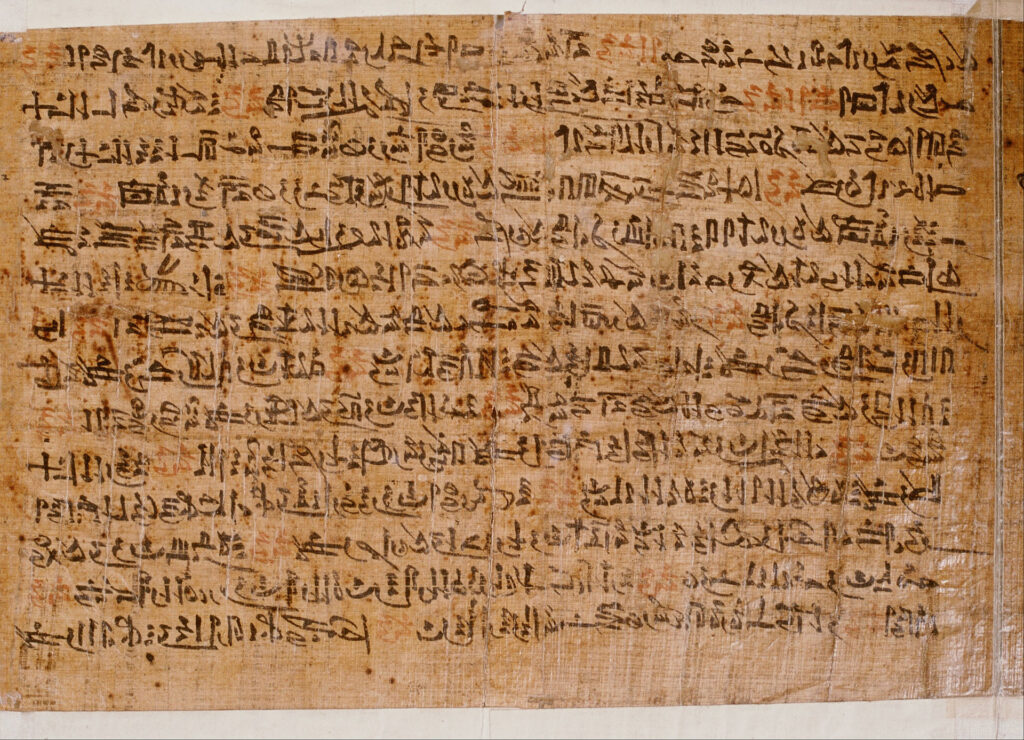Some people (atheists, primarily) like to argue that the nation of Israel’s exodus from Egypt as described in the Bible was a myth that never happened. Their position is frequently agreed with by a number of mainstream scholars and archaeologists who argue the Bible does not contain accurate history. These critics argue that insufficient evidence exists that an entire nation of nomadic people occupied an Egyptian desert thousands of years ago, even though some experts claim to have found solid evidence of a massive escape from Egypt by the Israelites.

However, in the Dutch Museum of National Antiquities in Leiden, Netherlands, there is part of an Egyptian manuscript written on papyrus during the period when the Exodus allegedly occurred that appears to provide external confirmation of the ten plagues mentioned in the Bible. Officially known as Ipuwer 344, the fragment is written in ancient Egyptian hieratic script and is believed to date no earlier than 1250 B.C. but the text on the papyrus itself is believed to be much older, possibly dating as far back as between 1850 – 1450 B.C.
The Exodus as described in the Bible is believed to have taken place between 1300 B.C. and 1200 B.C. All that is required to believe Ipuwer 344 and the book of Exodus are describing the same events is to allow for the possibility Ipuwer could be describing contemporary, not historical events. Once that is done, the two manuscripts share remarkable similarities.
For example, Exodus 7:20 claims the Nile turned to blood. Exodus 7:24 claimed the Egyptians were digging to look for water because they couldn’t drink from the Nile and in Exodus 9, the Bible says that trees were destroyed and grains ruined in the field. The Bible also claims locusts decimated crops, and a great cry rose among the Egyptians when they were forced to bury their dead firstborn children.
Contrast that against the Ipuwer Papyrus, which says blood is everywhere, and even the river is blood. Ipuwer says that people were thirsty, trees were felled and branches stripped, grain shortages, and many people were dying. Exodus 10:7 says “Egypt is destroyed.” By comparison, the Ipuwer manuscript simply says, “All is ruin!” Even so, both sources appear to be saying the same thing — Egypt was going through a very rough time. How likely is it that Jewish history and an Egyptian document would both provide a very similar account of the same strange sequence of events?
Perhaps most remarkable, both the Ipuwer Papyrus and the Bible describe female slaves being adorned with precious jewels by the Egyptians. What is the likelihood that an external document that originated from an Egyptian source would corroborate such a precise detail described in the Bible as a historical truth? Just as Tacitus and Josephus appear to provide documented evidence for the historical Christ, the Ipuwer Papyrus appears to confirm the biblical account of the Exodus as a historical fact.
It can’t just be a bizarre coincidence or inexplicable conspiracy. Somehow, it must be true.

Speak Your Mind